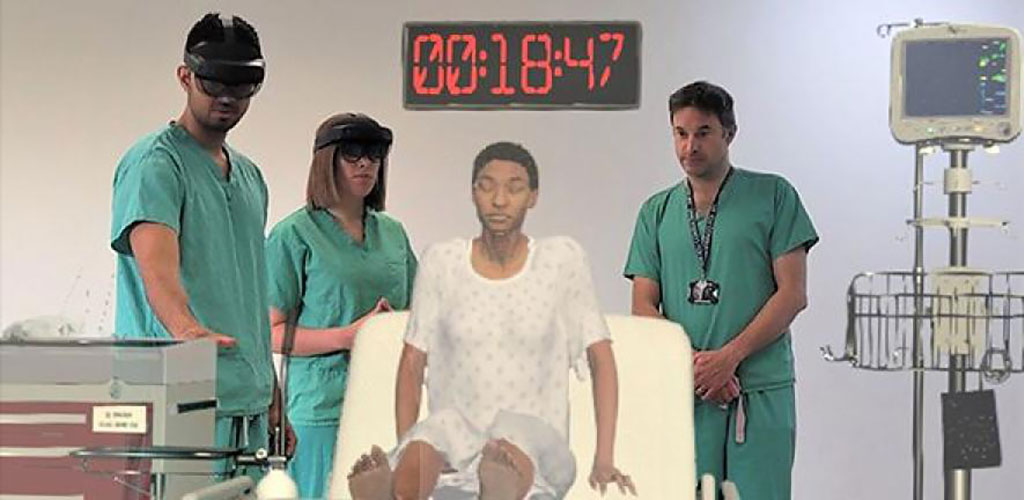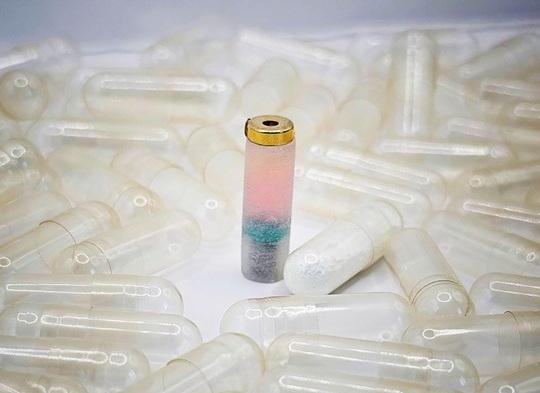Life-Like Hologram Patients Train Doctors for Real-Time Decision Making in Emergencies
|
By HospiMedica International staff writers Posted on 30 Jun 2022 |

A medical training project using 'mixed reality' technology aims to make consistent, high-level and relevant clinical training more accessible across the world.
University of Cambridge (Cambridge, UK) in partnership with GigXR (Los Angeles, CA, USA) is developing HoloScenarios, a new training application based on life-like holographic patient scenarios. Learners in the same room, wearing Microsoft HoloLens mixed-reality headsets, are able to see each other in real life, while also interacting with a multi-layered, medically accurate holographic patient. This creates a unique environment to learn and practice vital, real-time decision making and treatment choices.
Through the same type of headset, medical instructors are also able to change patient responses, introduce complications and record observations and discussions - whether in person in a teaching group or remotely to multiple locations worldwide, via the internet. Learners can also watch, contribute to and assess the holographic patient scenarios from Android, iOS smartphone or tablet. This means true-to-life, safe-to-fail immersive learning can be accessed, delivered and shared across the world, with the technology now available for license to learning institutions everywhere. The first module features a hologram patient with asthma, followed by anaphylaxis, pulmonary embolism and pneumonia. Further modules in cardiology and neurology are in development.
Delivered by the Gig Immersive Learning Platform, HoloScenarios aims to centralize and streamline access and management of mixed reality learning, and encapsulate the medical experience of world-leading doctors. The new technology could also provide more flexible, cost-effective training without heavy resource demands of traditional simulation, which can make immersive training financially prohibitive. This includes costs for maintaining simulation centers, their equipment and the faculty and staff hours to operate the labs and hire and train patient actors.
“Mixed reality is increasingly recognized as a useful method of simulator training,” said Dr Arun Gupta, consultant anesthetist at CUH and director of postgraduate education at Cambridge University Health Partnership, who is leading the project. “As institutions scale procurement, the demand for platforms that offer utility and ease of mixed reality learning management is rapidly expanding.”
“Our research is aimed at uncovering how such simulations can best support learning and accelerate the adoption of effective mixed reality training while informing ongoing development,” said Professor Riikka Hofmann at Cambridge’s Faculty of Education who is leading an analysis of the new technology as a teaching and learning resource. “We hope that it will help guide institutions in implementing mixed reality into their curricula, in the same way institutions evaluate conventional resources, such as textbooks, manikins, models or computer software, and, ultimately, improve patient outcomes.”
Related Links:
University of Cambridge
GigXR
Latest AI News
Channels
Critical Care
view channel
AI Heart Attack Risk Assessment Tool Outperforms Existing Methods
For decades, doctors have relied on standardized scoring systems to assess patients with the most common type of heart attack—non-ST-elevation acute coronary syndrome (NSTE-ACS). The GRACE score, used... Read more
'Universal' Kidney to Match Any Blood Type
Blood-type incompatibility has long been one of the greatest obstacles in organ transplantation, forcing thousands of patients—particularly those with type O blood—to wait years longer for compatible donors.... Read moreSurgical Techniques
view channel
Minimally Invasive Endoscopic Surgery Improves Severe Stroke Outcomes
Intracerebral hemorrhage, a type of stroke caused by bleeding deep within the brain, remains one of the most challenging neurological emergencies to treat. Accounting for about 15% of all strokes, it carries... Read more
Novel Glue Prevents Complications After Breast Cancer Surgery
Seroma and prolonged lymphorrhea are among the most common complications following axillary lymphadenectomy in breast cancer patients. These postoperative issues can delay recovery and postpone the start... Read morePatient Care
view channel
Revolutionary Automatic IV-Line Flushing Device to Enhance Infusion Care
More than 80% of in-hospital patients receive intravenous (IV) therapy. Every dose of IV medicine delivered in a small volume (<250 mL) infusion bag should be followed by subsequent flushing to ensure... Read more
VR Training Tool Combats Contamination of Portable Medical Equipment
Healthcare-associated infections (HAIs) impact one in every 31 patients, cause nearly 100,000 deaths each year, and cost USD 28.4 billion in direct medical expenses. Notably, up to 75% of these infections... Read more
Portable Biosensor Platform to Reduce Hospital-Acquired Infections
Approximately 4 million patients in the European Union acquire healthcare-associated infections (HAIs) or nosocomial infections each year, with around 37,000 deaths directly resulting from these infections,... Read moreFirst-Of-Its-Kind Portable Germicidal Light Technology Disinfects High-Touch Clinical Surfaces in Seconds
Reducing healthcare-acquired infections (HAIs) remains a pressing issue within global healthcare systems. In the United States alone, 1.7 million patients contract HAIs annually, leading to approximately... Read moreHealth IT
view channel
Printable Molecule-Selective Nanoparticles Enable Mass Production of Wearable Biosensors
The future of medicine is likely to focus on the personalization of healthcare—understanding exactly what an individual requires and delivering the appropriate combination of nutrients, metabolites, and... Read moreBusiness
view channel
Philips and Masimo Partner to Advance Patient Monitoring Measurement Technologies
Royal Philips (Amsterdam, Netherlands) and Masimo (Irvine, California, USA) have renewed their multi-year strategic collaboration, combining Philips’ expertise in patient monitoring with Masimo’s noninvasive... Read more
B. Braun Acquires Digital Microsurgery Company True Digital Surgery
The high-end microsurgery market in neurosurgery, spine, and ENT is undergoing a significant transformation. Traditional analog microscopes are giving way to digital exoscopes, which provide improved visualization,... Read more
CMEF 2025 to Promote Holistic and High-Quality Development of Medical and Health Industry
The 92nd China International Medical Equipment Fair (CMEF 2025) Autumn Exhibition is scheduled to be held from September 26 to 29 at the China Import and Export Fair Complex (Canton Fair Complex) in Guangzhou.... Read more









.jpg)






